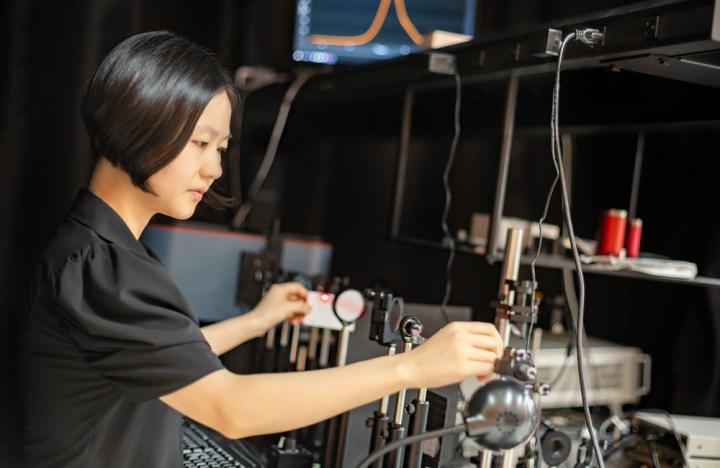Shining new light on moving data on chip

UT Dallas engineer gets DoD grant to develop nanoLED-based on-chip communications
A University of Texas at Dallas researcher has received an award from the US Department of Defense's Army Research Office Young Investigator Program to develop a nanoLED technology to be used in integrated circuits.
The award provides Qing Gu, assistant professor of electrical and computer engineering, more than $356,000 over three years to support work to create an on-chip light source to carry data.
During her doctoral research, Gu created a nanolaser that could be used as a light source in on-chip optical communication systems. Now, however, she believes that nanoLEDs -- or tiny light-emitting diodes -- have the potential to perform better than nanolasers.
In addition to examining nanoLEDs, Gu's project includes designing and testing the infrastructure to make the light source and integrated circuit efficient.
"We want to look at not only the device itself but also the driver circuitry, and comprehensively evaluate the entire optical interconnect," Gu said. "We are not only doing device-level work, but we are also looking at the system-level performance. Our goal is to show that nanoLEDs are a better candidate than nanolasers for chip-scale data transportation."
The potential to allow for faster and more efficient data transmission has a range of military applications.
"This cutting-edge work with nanoLEDs could have a broad impact on the Army," said Mike Gerhold, program manager for electronics at the Army Research Office, an element of the US Army Combat Capabilities Development Command. "This research could lead to the development of low-energy data communications for faster and more energy-efficient electronic systems. Other applications would include active electro-optical systems where optical beam steering and sensing is needed."
Lawrence Overzet, head of the Department of Electrical and Computer Engineering at UT Dallas, said Gu's research has far-reaching implications.
"When your internet company tells you that it is bringing an optical fibrd to your home, you know that your internet speeds will increase by a factor of 10, 100 or even a thousandfold. This is at the large scale, but Dr. Gu's research is looking to bring the increased data speeds down to the chip level, too -- the micro- and nanoscale," Overzet said. "This is both much more difficult and much more exciting. Dr. Gu's research is at the cutting edge of photonics, and we are excited about what she brings to electrical and computer engineering at UT Dallas."
The Young Investigator Program is designed to identify and support scientists and engineers who show promise for doing creative research in order to encourage their teaching and research careers.



































